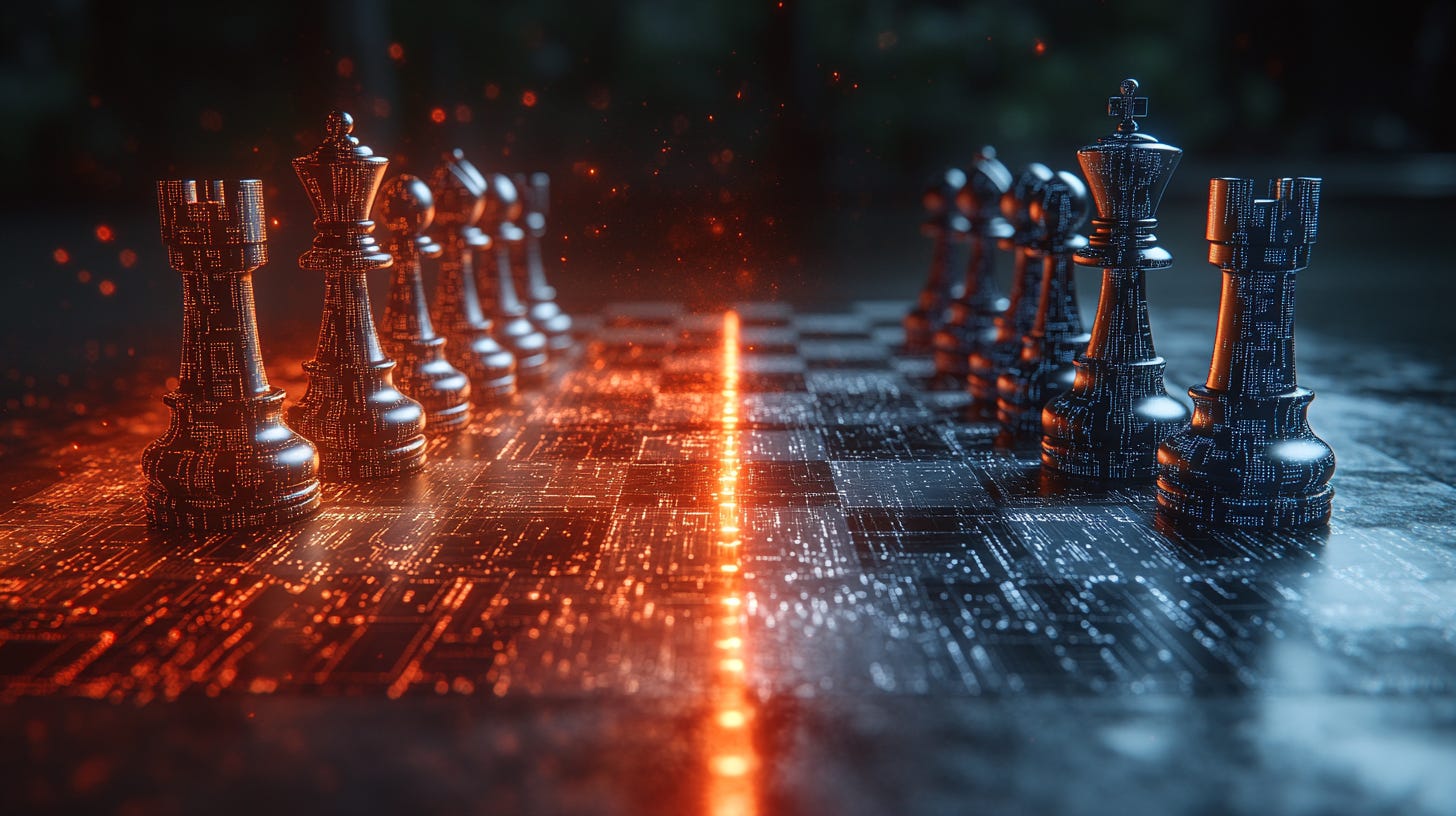Generalists in an AI World
For most of us, succeeding in the AI revolution isn't about technology – it's about adapting our habits and culture
TL;DR: The ability to think across domains and fundamentally reshape work habits is becoming increasingly valuable in an AI-augmented world. Success comes not from simply adopting AI tools, but from developing new mental models that allow us to reimagine how we work. Those who can recognize patterns between fields and adapt their ingrained behaviors will have a distinct advantage over those who simply layer AI onto existing processes.
While AI advances through breakthrough technologies, most organizations are missing its deeper implication: the need to fundamentally relearn how we work. Success in this era demands more than just adopting new tools—it requires the ability to reimagine existing processes and adapt ingrained habits. This is where generalists, with their capacity to recognize patterns across domains and translate concepts between fields, have a distinct advantage.
The most successful organizations aren't just investing in AI infrastructure—they're cultivating workforces that can think flexibly across traditional boundaries. They understand that the real challenge isn't implementing the technology, but developing the mental models and work habits to leverage it effectively.
This is where generalists shine.
The Chess Master's Lesson
In 1998, Garry Kasparov, fresh from his defeat by IBM's Deep Blue, organized a groundbreaking chess tournament. Instead of pitting humans against machines, he created something revolutionary: human-computer teams competing against each other. This format, which became known as Advanced Chess, revealed profound insights about human-machine collaboration.
What emerged was fascinating: the combination of computers and humans effectively leveled the playing field. Kasparov, known for his overwhelming tactical superiority against his peers, found himself frequently drawing matches with opponents he would typically dominate. The computers had neutralized the tactical advantage that set him apart, forcing a new kind of competition focused on human-machine collaboration rather than pure chess brilliance.
This leveling effect perfectly illustrates Moravec's paradox: the discovery that, contrary to traditional assumptions, high-level reasoning requires very little computation, while low-level sensorimotor skills require enormous computational resources. In chess terms, while humans struggled with complex tactical calculations (which computers excel at), they maintained their edge in strategic thinking and pattern recognition.
This paradox offers a crucial model for professionals in today's AI era. Consider:
What tasks that you consider "uniquely human" might actually be prime candidates for automation?
Where do your true strengths lie, and how can AI complement rather than replace them?
How might AI help level the playing field in your industry, and what new forms of competition might emerge?
What started as an experiment in computer chess has become a prophecy for our current moment. Today's most effective professionals aren't those who try to outcompete AI at specialized tasks, but those who learn to dance with it, combining human insight with computational power. They understand their own strengths and weaknesses in the context of Moravec's paradox, adjusting their habits and workflows to leverage automation where it excels while focusing their human capabilities on higher-level strategic thinking and cross-domain pattern recognition.
Pattern Recognition: The Human Edge
In his book Range, David Epstein1 makes a compelling case for the power of broad experience over narrow specialization. He shows how generalists often triumph in a world that increasingly rewards those who can connect dots across disciplines. Now, as AI tools become more powerful, this advantage is amplifying.
Pattern recognition across domains isn't just a useful skill – it's becoming the critical differentiator for both individuals and organizations. While AI excels at identifying patterns within massive datasets in specific domains, it struggles with conceptual leaps between fields. This is where human generalists become invaluable.
In Range, Epstein puts it perfectly:
"AI systems are like savants. They need stable structures and narrow worlds. When we know the rules and answers, and they don't change over time—chess, golf, playing classical music—an argument can be made for savant-like hyperspecialized practice from day one. But those are poor models of most things humans want to learn."
This insight is crucial - while AI excels in stable, well-defined domains, most real-world challenges require the ability to navigate uncertainty, adapt to changing conditions, and apply knowledge across contexts.
Consider a marketing team using AI for customer segmentation. A specialist might focus on optimizing the AI's parameters within marketing contexts. A generalist, however, might recognize how cognitive biases studied in behavioral economics could reshape their interpretation of the AI's segments. For instance, understanding how anchoring bias affects purchasing decisions could help the team design more effective pricing strategies across different customer groups. This kind of cross-pollination between fields often leads to more nuanced and effective approaches than pure marketing analysis alone.
Breaking Down Traditional Boundaries
The real power of generalist thinking in an AI world isn't just about individual adaptability – it's about reimagining how entire organizations work. When AI can handle specialized tasks across departments, the greatest value comes from people who can spot patterns and opportunities that cross traditional boundaries.
Consider how Advanced Chess transformed the game: it wasn't just about combining human and computer strengths, but about fundamentally reimagining how the game could be played. Today, platforms like chess.com have taken this evolution even further. Players at all levels now learn and experience the game through a blend of human intuition and machine analysis. Post-game analysis, tactical puzzles, and real-time feedback have become integral to how people understand and improve at chess. The boundary between human player and AI tool has become productively blurred.
This blurring of boundaries resonates deeply with my experience as a Product Manager. I'm finding myself rethinking the traditional definitions of what it means to build, design, and test products with people. The lines between PM, designer, developer, and user are becoming increasingly fluid. AI tools aren't just changing how we execute these roles – they're challenging our assumptions about where one role ends and another begins.
This isn't just about adapting to AI – it's about recognizing that the boundaries between domains are becoming increasingly artificial. The most valuable insights often come from the spaces between disciplines, where patterns from one field illuminate challenges in another. Just as chess players have embraced AI as part of their learning journey, we need to learn to see our work differently. The question isn't "How do we use AI?" but "How do we need to think differently about what we do?"
Call to Action: Take a step back and examine your approach to AI adoption. Where are you maintaining artificial boundaries between domains that could be blurred? Share your experiences in the comments below – I'd love to hear how you're thinking about this evolution.
What patterns have you recognized across different domains that could inform how we work with AI? I'd love to hear your perspectives.
This is an affiliate link. If you purchase through these links, I earn a small commission that helps fuel my writing with coffee. Thank you for your support!*




